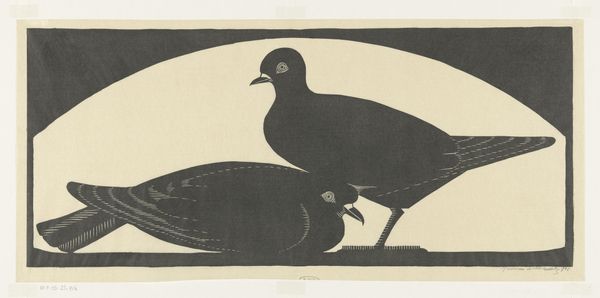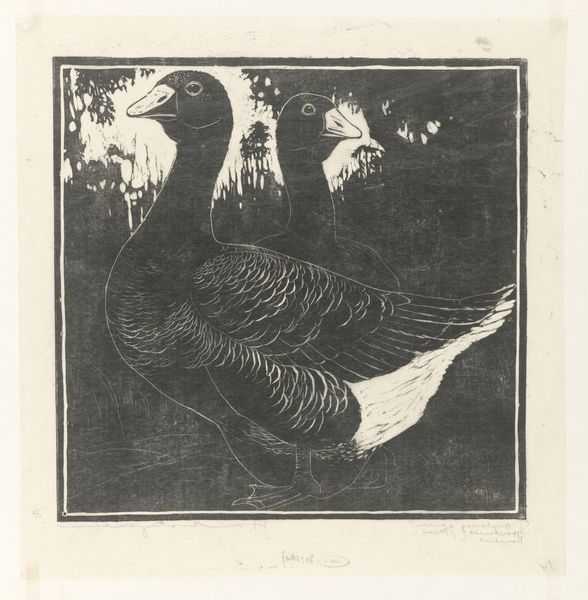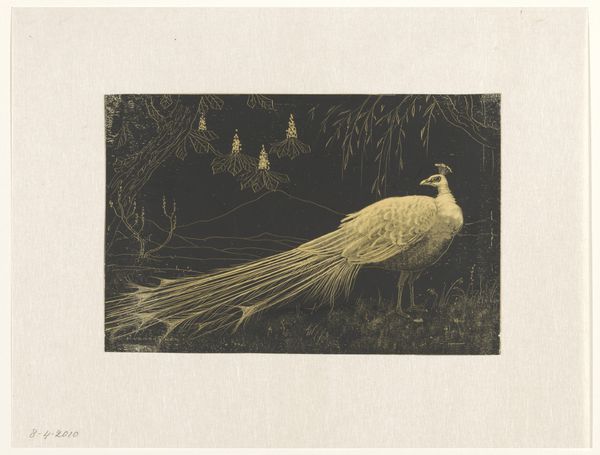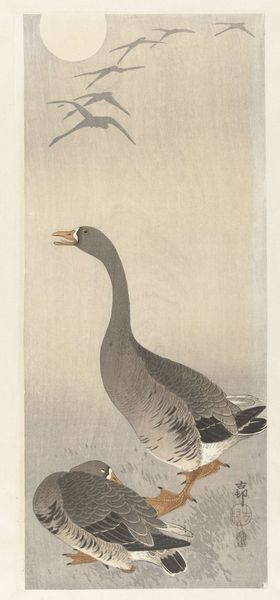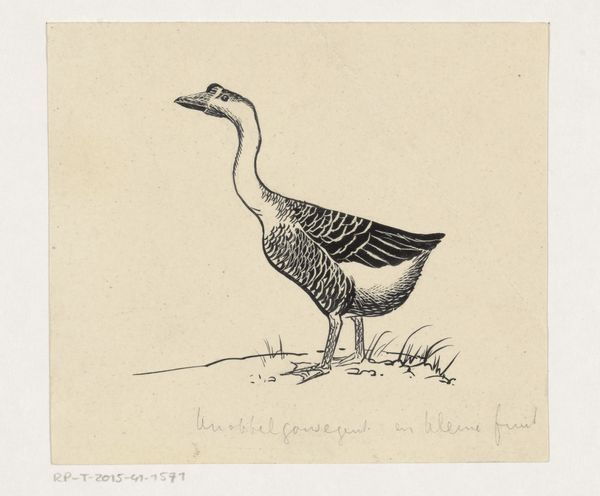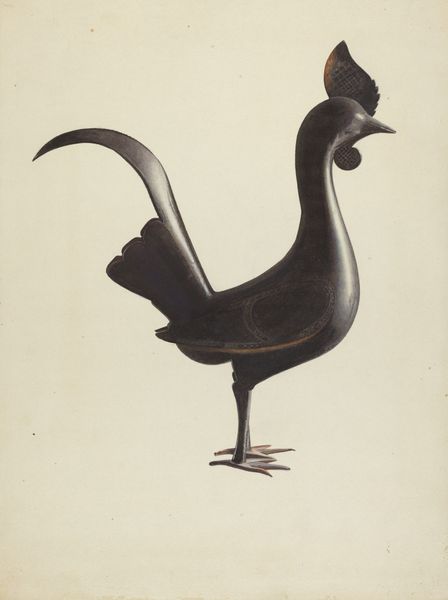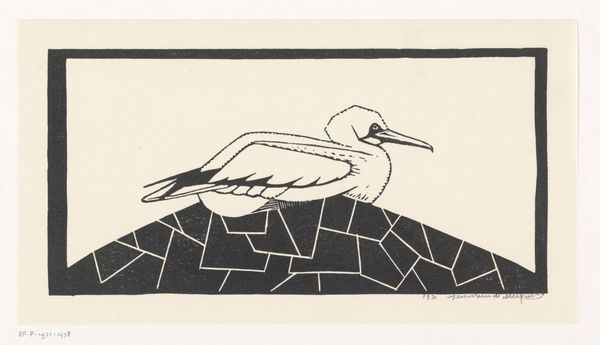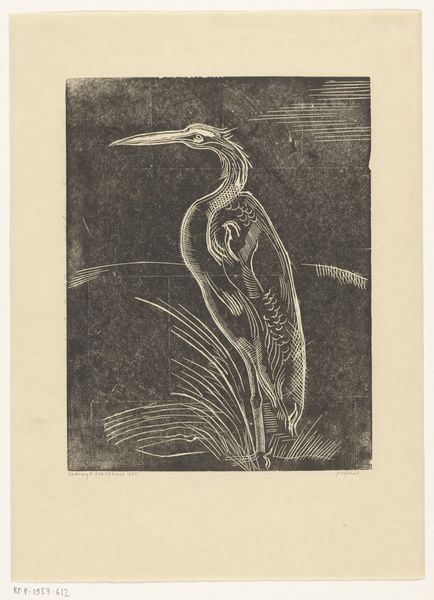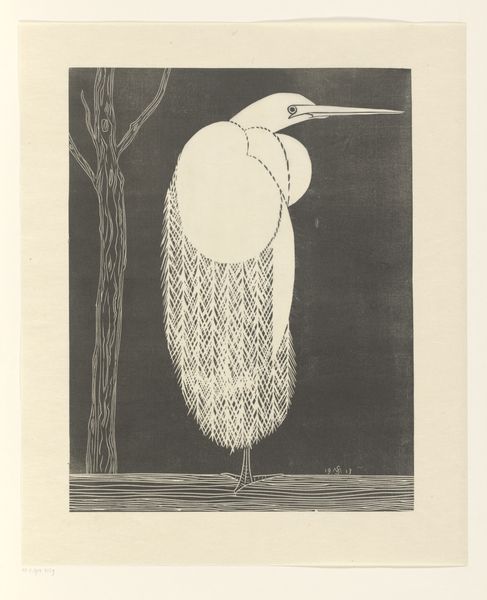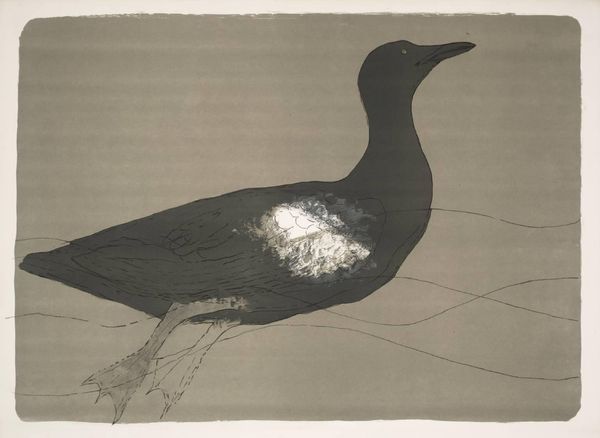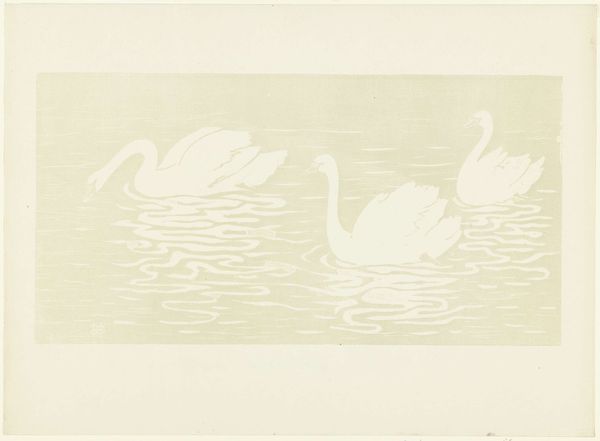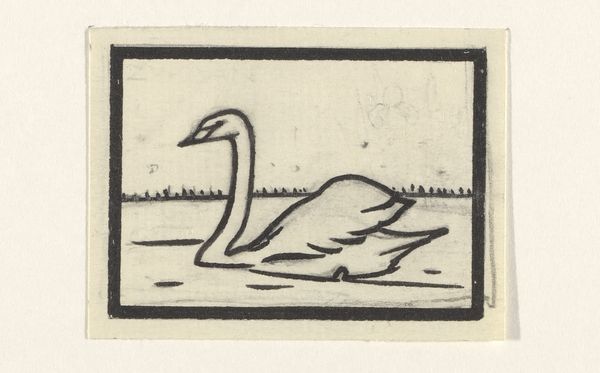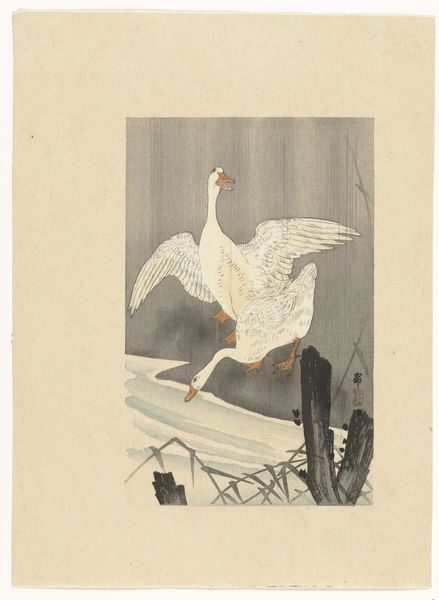
drawing, print, woodcut
#
portrait
#
drawing
#
art-nouveau
# print
#
old engraving style
#
figuration
#
geometric
#
expressionism
#
woodcut
Dimensions: height 237 mm, width 288 mm
Copyright: Rijks Museum: Open Domain
Editor: So this is "Knobbelgans" by Samuel Jessurun de Mesquita, a 1916 woodcut now at the Rijksmuseum. It's so…stark. The goose is very geometric and kind of isolated against the neutral background. How do you interpret this work? Curator: Immediately, the graphic nature of this print jumps out. The high contrast and the somewhat flattened perspective reflect a negotiation between traditional artistic approaches and the emerging aesthetics of early 20th-century modernism. Think about the broader socio-political context: 1916 was during the First World War. Do you think that influenced de Mesquita's subject matter? Editor: Potentially. I hadn't thought about the war. The goose could represent isolation. What about his choice of medium? A woodcut seems like a very deliberate choice. Curator: Exactly. Woodcuts often have a raw, expressive quality that resonates with themes of alienation or the search for authentic expression in a rapidly changing world. I’d even ask: is there a commentary on the exoticisation, the othering of subjects at this time? What power structures are reflected or perhaps challenged within this relatively simple composition? Editor: I see what you mean! The starkness and the graphic quality really amplify a sense of the animal as isolated and distinct. Almost defiant, rendered with this specific medium. It makes me think about broader social anxieties of the period, reflected through art. Curator: Precisely. De Mesquita gives us a way of considering pressing social and political concerns that haunt our own moment, perhaps offering insight into those who are systematically unheard. Editor: This makes me think very differently about what at first glance seems like just a portrait of a goose! Thanks!
Comments
No comments
Be the first to comment and join the conversation on the ultimate creative platform.
